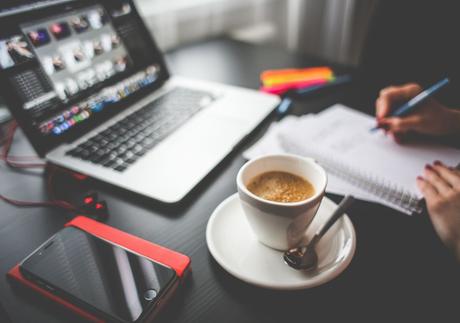In the recent past, the use of websites has continued to increase. Currently, sites are taking over the business sector. The amazing thing is that they boost sales while improving the cost of operations. However, the growing number of websites has seen competition increase. Thus, every website owner is left with no option but to ensure that his or her site stands out in the crowd.

A good website should have a design that meets its functionality, user experience and complements its content. You should always have in mind that visitors are never impressed with a website design that looks unprofessional. Here are some proven tips & tricks that can help you come up with perfect web design.
1. Keep the loading time short
Have you ever tried loading a page, only for it to take more time than expected? What runs through your mind at that exact moment? Many people find themselves thinking that they are out of network data. Surprisingly, the issue is usually not related to your network connection. You will realize that other pages are usually opening. The difference is that some websites take longer to load than others.
The slow speed sees most visitors closing the page even before it opens fully. After all, time is precious. Not long ago, research showed that 40 percent of visitors are likely to leave a website the moment they realize that it's slow. Most of these visitors end up opening a competitor site.
Therefore, it's advisable to keep your site's loading time as short as possible. One of the best ways to reduce a site's loading time is optimizing images within site. Also, you can scale the files to the right size before uploading them to your site. This trick ensures that images load quickly and hence not slowing the site. Also, you can optimize CSS files and browser caching to boost the speed.
2. Maintain consistency
Have you ever tried to visit a site and you felt lost in between the pages? Most likely, the pages had different color themes. Well, it's ok to be unique and that includes playing around with the themes. However, most sites tend to overdo, and it doesn't end well for them.
Consistency is the most significant thing to consider when it comes to improving a site's design. Keeping a similar theme makes a visitor feel familiar with your website. Every page on your website should have a consistent color theme and font. You can play a little with the themes. But, ensure that you do it like a pro.
3. Build a responsive site
Over the past few decades, the number of phone models hitting the market has been on the rise. According to various studies, most individuals prefer browsing via their smartphone. Therefore, when designing your site, you must ensure that it favors almost every device that a user may intend to use. Building a responsive site helps in boosting its rankings, as well as, the traffic. You can easily hire a freelance web designer to help ensure that your site maintains the same theme whether one is browsing via a pc or a smartphone.
4. A familiar navigation layout
A visitor should be able to navigate through your site without getting confused. Therefore, it's advisable to keep the navigation logical. Many people tend to be a bit creative by coming up with different navigation layouts. At times, the creativity may work. But, many are times it leaves your visitors confused.
Unfamiliar navigation layouts may see your visitors quitting the site out of frustration. Hence, use a navigation layout that users can relate with easily. Users are fond of the navigation bar being at the top of the site with links to various pages within the website. They enjoy browsing through sites with such a simple layout.
5. Learn to use headings and subheadings
Content is a significant part of a website. It's content that directs visitors to your site. Therefore, you should ensure that the content is presentable. Learn to use headings and subheadings in your content. This trick helps in attracting the attention of users who may be going through your web pages. Also, you can use different fonts within the content to make it presentable.
6. Use images
A site without images feels incomplete. It's always advisable to incorporate pictures in between texts. You can use high-quality images or videos to break up your content. The tactic helps in boosting the visitor's interest in your web pages. However, many people make the mistake of overdoing the images and hence failing. Keep the number of pictures used low for effectiveness.
Web designers often say that websites should use the images of local people instead of buying pictures online. This trick helps in winning the hearts of many visitors as they feel that they are in a place they can call home. Therefore, you can use images of local celebrities or your employees, if it's a business site.
Conclusion
The use of websites has become common recently. It's right to say that they are taking over the physical stores in the business sector. A successful site should be in a position to convert visitors into customers or perform specific tasks such as collecting emails. In the article, there are top six tips that you can use to improve your website's design. Read through all of them and see how you can improve your site.
